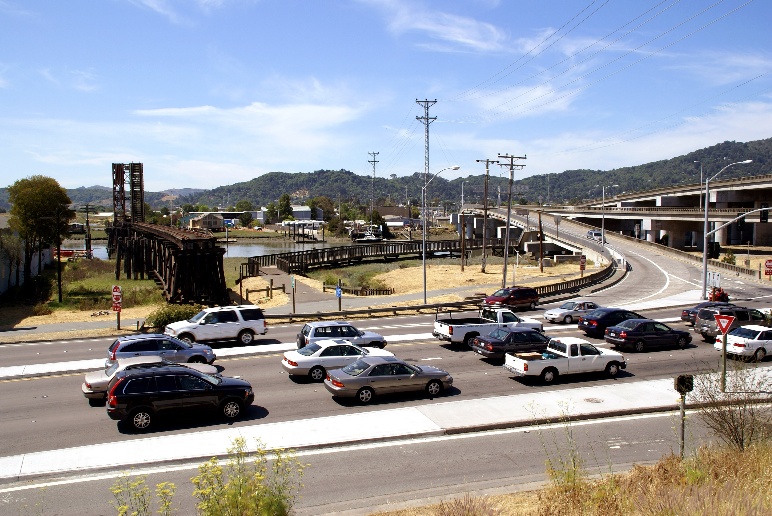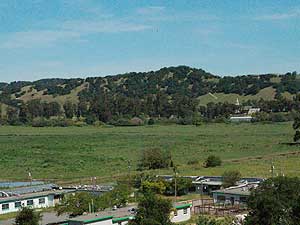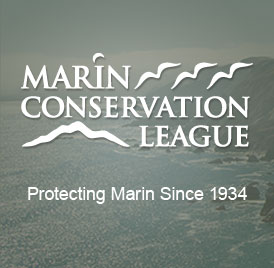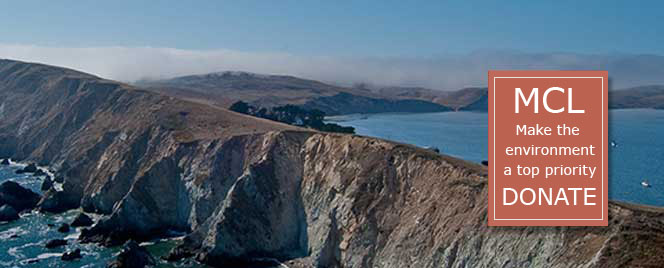| Marin Conservation League | 175 N. Redwood Dr., Ste. 135 | San Rafael CA 94903 | Tel 415.485.6257 | Fax 415.485.6259 Email Us. |
 |
About MCL
The Association of Bay Area Governments (ABAG) and the Metropolitan Transportation Commission (MTC) held a special joint meeting on July 18 at which they approved Plan Bay Area.
Draft Plan Bay Area (March 2013): http://www.mtc.ca.gov/planning/plan_bay_area/draftplanbayarea/
Final Environmental Impact Report (Please note this file is very large and will take a while to download.)

Previously, MTC and ABAG held a series of community meetings throughout the region at which they invited public comment on the scope and content of the EIR.
Click here for more information.
The Sustainable Communities Strategy Initial Vision Scenario
(For a more in-depth version of this summary, see the March-April 2011 MCL Newsletter.)
SB 375 Basics
In simplest terms, SB 375, passed by the Legislature in 2008, seeks to limit the effects of climate change by linking land use to transportation, thereby reducing vehicular greenhouse gas (GHG) emissions and promoting livable, healthy communities.
 The logic of SB 375 is based on the notion that if communities are designed to be more compact, people will drive less and communities will benefit overall.
The logic of SB 375 is based on the notion that if communities are designed to be more compact, people will drive less and communities will benefit overall.
Before the passage of SB 375, compact development was being promoted in region-wide planning to guide future development and transportation investments in the Bay Region. Under this region-wide “focused” approach, areas best suited for compact development were identified (Priority Development Areas) as were areas best suited for conservation (Priority Conservation Areas).
SB 375 made compact development official by mandating that the State’s 18 metropolitan planning regions demonstrate their ability to provide sufficient housing and livable communities affordable to all income levels for projected population growth by 2035, and simultaneously meet targets for reducing GHG emissions.
AB 32
AB 32 (Global Warming Solutions Act), which was passed in 2006, established State goals and schedules for reducing GHG emissions. All major emitting sectors of the economy are subject to the State goals. The transportation sector alone accounts for 38 percent of GHGs in the state.
According to analysts, greater fuel efficiency and reduced carbon fuels for vehicles will not be enough to reduce this source of GHGs. Shifts in land development patterns and transportation also will be necessary. That is where SB 375 comes in. It links new development with transportation in a way that will encourage people to drive less and shorter distances (i.e., reduce vehicle miles traveled - VMT) and thereby reduce their GHG emissions.
Implementation
In the Bay region, the responsibility for implementing SB 375 is shared by Association of Bay Area Governments (ABAG) and the Metropolitan Transportation Commission (MTC), in partnership with the Bay Area Air Quality Management District and the Bay Conservation and Development Commission. Marin’s primary connections with SB 375 planning have been through our own Transportation Authority of Marin (TAM) and representatives from Marin County governments to ABAG and MTC.
The first obligation of SB 375 was for the California Air Resources Board to establish targets for reducing GHGs for each metropolitan planning region of California and to provide guidance on the elements that should comprise a “Sustainable Communities Strategy.”
The second phase—and central task of the bill—is the development of a Sustainable Communities Strategy (SCS) for each of the metropolitan planning regions. In the San Francisco Bay region, metropolitan planning covers nine counties and 101 towns and cities. The basic objectives of the SCS are twofold: 1) Provide a new 25-year land use strategy for the Bay region that identifies areas to house all of the region’s current and anticipated population, including all income groups; and 2) provide a land use pattern which, when integrated with the transportation system, will reduce GHGs from automobiles and light trucks to meet the approved targets. If the SCS is unable to meet emission reduction targets, then MTC must develop an Alternative Planning Strategy that could achieve the targets.
The first round draft of the SCS, an “Initial Vision Scenario,” was presented to local governments in March 2011.
Taken broadly, the SCS is not just about assigning housing or achieving greenhouse gas targets. Its goal, according to the ABAG web site, onebayarea.org, is to prepare the Bay Area for changing circumstances of the 21st century—population growth, climate change, public-health needs, and at the same time protect natural resource and agricultural areas.
Planning for affordable housing for all income levels in the Bay Area is an essential task of the SCS. Controversy continues over the source and rationality of RHNA numbers and target housing densities allocated to Marin County and some of its towns and cities, as well as in many other jurisdictions in the Bay Area.
Issues and Challenges
Where might Marin be most affected and how is Marin likely to respond as the requirements of SB 375 begin to take form?
Will densification of existing urban areas compromise “community character”?
Can transportation and land use changes alone contain sprawl in Marin?
Will transit be sufficiently funded to support the basic premise of compact (TOD) development?
How will local communities deal with SCS growth projections for 2035, which extend far beyond typical General Plan estimates and policies?
What are the environmental limits on where and how much new development can be located?
The goals of SB 375 are to accommodate growth and to address global climate change by careful planning on a regional basis. Although regional planning has a long history in uniting counties and cities in the San Francisco Bay Region in shared solutions, SB 375 will challenge all jurisdictions throughout the region to meet regional goals in a way that also respects their local needs and conditions.
Documents and Correspondence
2013
2012
- July 11, 2011 - Letter to MTC re: Plan Bay Area EIR scoping
- May 7, 2012 - Letter to MTC Planning Committee re: OneBayArea Conservation Grants
- April 24, 2012 - Letter to ABAG: MCL Comments on Draft Jobs-Housing Connection Scenario
2011




